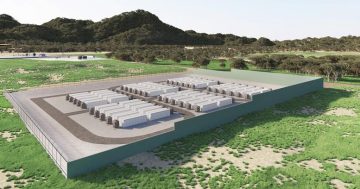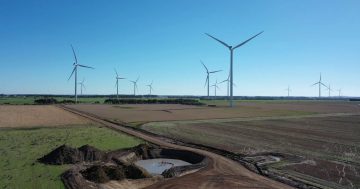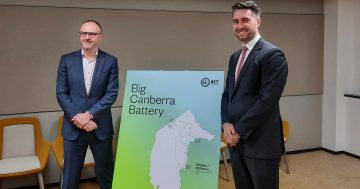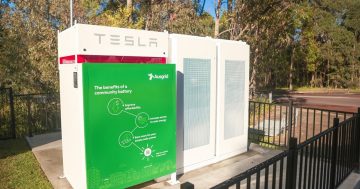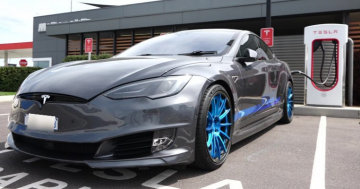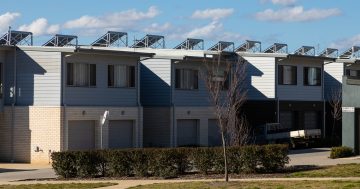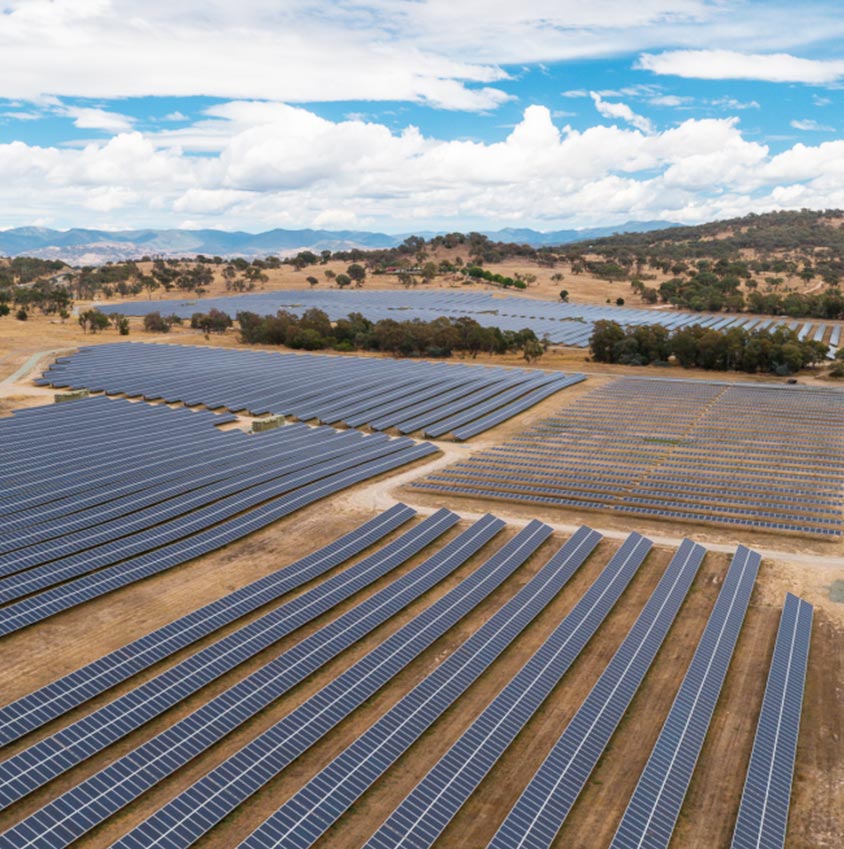
The ACT Government says the first phase of its Big Canberra Battery Project will be able to deliver at least 250 megawatts of new large-scale battery storage capacity across the ACT. Photo: Mugga Lane Solar Park.
The upcoming Territory Budget will allocate $850,000 to keep the $100 million Big Canberra Battery Project on track.
The much-touted project will be delivered in three “streams”, with the first phase to deliver a massive 250-megawatt battery (or perhaps batteries).
Construction is expected to start on that facility late next year.
Following an expression of interest process which closed in February this year, the government will go out to tender to selected companies next month.
It’s anticipated this large battery – much like the Hornsdale Power Reserve in South Australia – will need a site of up to two hectares.
The government will next month also go out to tender for a second stream of the project – 14 batteries to be installed at government sites such as schools in Fyshwick, Gungahlin, Belconnen, Chifley, Greenway, Kambah and Stromlo. Each of these batteries is small – up to one megawatt each.
The government says the second stream will not only reduce power used in government buildings but reduce the strain on the distribution network.
A final phase, which is still in the process of policy development, will deliver neighbourhood-scale batteries. These will likely sit in a park, for example, and will be used to soak up power in areas with lots of rooftop solar.
Once completed, the entire battery ecosystem will be able to provide power for around one-third of the ACT.

Chief Minister Andrew Barr says the future is all-electric. Photo: ACT ESA.
The large battery will be managed under a revenue-sharing arrangement where the government pays a fixed annual sum in exchange for a fixed percentage share of total project revenue from the provider.
The provider is, in turn, responsible for the facility’s control, management, operation and maintenance.
It’s hoped this will give the project more certainty and security.
The smaller batteries for stream two will likely be purchased from local companies.
Construction is already underway on large-scale batteries – one being built by Neoen in Beard and one by Global Power Generation in Queanbeyan.
These were previously announced following a reverse auction process.
The funding builds on the $100 million over five years allocated in the 2020-21 budget to the Big Canberra Battery Project.
According to the government, the project will increase network reliability by reducing pressure and congestion on the electricity grid.
It also forms a central part of the government’s climate change strategy and target of net-zero emissions by 2045.
Last week, the Territory government outlined a range of electric incentives, including the phase-out of internal combustion engine vehicles from 2035 onwards and a major overhaul of the car registration system from one based on weight to emissions instead.
Stamp duty exemptions on new electric vehicles will also be extended to second-hand electric cars and the government will make changes to planning rules to increase the prevalence of EV chargers around town.
As he unveiled the ACT’s full zero emissions vehicles strategy last Wednesday (20 July), Chief Minister Andrew Barr acknowledged an all-electric city would put pressure on the existing grid.
“[This issue] is the subject of work at the territory and national level,” he said.
“There are billions of dollars being invested in this. Bottom line is there will need to be, and there will be, more investment in our energy network.
“More batteries, more storage opportunities.”
Mr Barr said this would include large-scale government projects, batteries rolled out in government institutions like schools and community batteries, as well as individual household batteries.
The Chief Minister will hand down the Territory’s Budget on Tuesday, 2 August.













